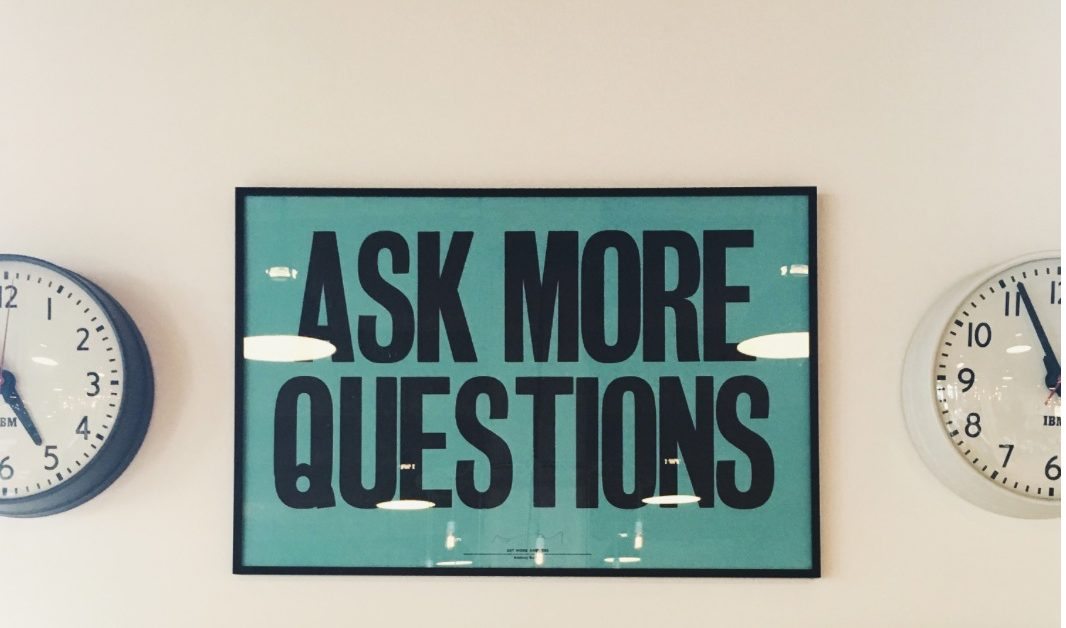
Have you been making lists each day but not making progress? Most goals are missing and essential component: emotional intelligence. Power up your goal setting with EQ. By adding the CLEAR method for setting goals to your SMART goals routine, you’ll boost your effectiveness. With CLEAR methodology you can use emotional intelligence in goal setting to increase collaboration and empathy, transforming your teams to high performing achievers.
SMART and CLEAR: Emotional Intelligence in Goal-Setting
If you are like me, you began today by drinking something sweet and chocolate and making a list of ‘Things to Do’. I am an inveterate list-maker, not only because of that satisfying sensation when I check something off the list, but also because it keeps me on an even keel during busy, chaotic days. I know what is next, or what might have to wait until tomorrow, because my objectives are laid out in front of me. List making and goal setting is not a new idea. Back in 1960s, Locke’s research on goal setting and motivation changed the way people got thing done. His work highlighted that working toward a goal is a major source of motivation and improved performance. His research showed that hard goals produced a higher level of performance than easy goals.

Today, many business people, educators, and politicians successfully use lists of tasks or goals to orient their schedule and provide an overarching theme to a part of the day, but it is often driven by meetings and schedules rather than priorities and people. Therefore, I found myself thinking about how we arrive at these goals – the ones that end up on our lists, intimidating and bothering us for days until they are done – and I wondered if there’s a way to bring a more emotionally intelligent, compassionate approach to goal-setting. I was determined that imagination and creativity could have much more of a role in this process, and I set out to figure out how.
Goal-Setting 101
I began with the S.M.A.R.T. system of goal-setting, and it’s a commendable place to start. According to this popular idea, first articulated by George Doran in 1981, we should work to ensure that our goals are:
- Specific, so that there’s complete clarity for everyone involved
- Measurable, so that we know when we’ve achieved the objective
- Achievable or Adjustable, and accepting of non-linear pathways to the solution
- Realistic, because reality doesn’t change, however much we might object!
- And finally, timed, with a clearly articulated and agreed duration
These sound eminently reasonable to me, and the SMART process has brought success for many. In fact, a Dominican University of California study in 2007 found that the goals that are specifically identified, written down and shared with a friend are far more successful than those without written goals. People are most effective with accountability, written commitment and peer support.
More than SMART

I would like to add something to the S.M.A.R.T. process. I would like to emphasize what I consider to be missing: the human and emotional sides of how we get things done. The SMART principles appear primarily cognitive to me, and that leaves us needing additional elements to our goal-setting process, which are perhaps less tangible but equally important; here are some possibilities:
Reward yourself for achieving the goal, especially if it’s a major milestone;
Recognize the contributions of those who helped (often neglected);
Celebrate the achievement together.
Any team who accomplishes a goal, and is then encouraged to feel really good about it, is more likely to want to work together again. These elements are an obscure and subtle aspect, but an important addition to the goal-setting steps—and produces a greater contentment within the team, plus a shared victory.
CLEAR Goal-Setting: Getting Beyond Mechanics
There are many things right with the SMART principle, but I would like to add some more ideas for goal-setting which bring in innovative thinking and a more compassionate approach. I find that the danger of SMART is that it boils down the goals (and therefore, perhaps, the act of achieving them) to just mechanics; it can be seen as a de-humanized algorithm composed within a rather dry, results-driven philosophy, but by bringing in some simple tools, we might arrive at goals (and a method of working toward them) which are more in harmony with the precepts of emotional and social intelligence.
I’ve called this methodology CLEAR, and here is how it could work. Emotionally intelligent goal-setting should include these five concepts: Collaborate, Listen, Empathize, Adapt, Reward.
Collaboration: Group success from group investment
Imagine for a moment how your workplace would be if everyone bought into the goals for your team. They might even create those goals and suggest them to management. Emotionally intelligent goal-setting should include all of the stakeholders and elicit their opinions, theories, tactics and other ideas to help bring the goal to fruition. Think of goal-setting not as a dictated set of objectives, handed down by leadership, but as a suite of aims which are decided upon communally.
Listening: Being open to all ideas
A collaborative mindset goes hand-in-hand with an open, inclusive attitude to opinions. Neither should anyone be excluded from the goal-setting process, nor should any one person dominate. Keeping our ears open permits a broader discussion, and it might well be true that previously unheard voices have much to contribute.
Empathy: Find what’s possible
In a balanced relationship with the vagaries of reality, I try to empathize with my team and search for ways to compromise between what we want and what is possible. Telling someone that their goal is unachievable never feels good, but a ‘middle way’ approach can often work well. For example, the timescale for this goal could be adjusted, or more resources allocated; in many cases, more discussion might be needed to tease out which elements of the objective can be realized on this occasion, and which need to be pushed until a later time. Seeing these issues from your team’s point of view will demonstrate the validity of their thoughts and help you work toward an agreeable compromise.

Adaptable: Find work-arounds
I’m borrowing from SMART here, but the advice is solid: make your goals realistic to the environment you are in. For example, if you are desperate to get parents involved in a school activity, should it really happen at 2:00pm, or could it be pushed to later, so that more people can attend? Consider also funding and time–is there enough in the budget for this objective to be realized in its current form? And will the available people be able to complete this in the given time? False optimism is your enemy here; take a dispassionate, analytical approach for a moment and scrutinize past occasions where time was a factor. Ask for opinions on how long this particular task will take, because each session of goal-setting happens in a slightly different environment. I am reminded of the saying “Life is all about plan B.” And, if that does not work there are 24 more letters in the alphabet.

Rewards: Celebrate your achievement!
Plan a light-hearted event to mark the achieving of the goal. Go out to dinner together, throw a party, have an afternoon of games or story-telling, or give small gifts to those who took part. Recognition, acknowledgement, and gratitude are so often missing from corporate environments, and it is important that your team is made to feel that they are much more than cogs in a machine. Individual contributions are essential to planning and achieving goals, and these should be noted publicly.
Goals: Not the end of the road
I think that reflection is the technique by which we make sense of each day, so we need to contemplate regularly on our goals—short-term and long-term ones, gigantic ones and tiny ones. How many of the goals you wrote down while drinking your morning wake-up drink did you achieve yesterday? And how many on your list for today are actually going to happen?

We all want to get more out of ourselves on a given day, and it’s immensely satisfying to see a long list of tasks checked-off at the day’s end. But most of us, I’m going to guess, simply don’t achieve what we set out to. Life is full of interruptions—phone calls, accidents, traffic delays, missing people, missing resources, etc. Think about this, and analyze where you made a mistake. Are your aims realistic within the given time frame? Are you responding to the circumstances, or simply trying to bulldoze your way through? Were enough people involved in setting that goal, or was this a rather unilateral decision?

A solid philosophy of goal-setting can have implications which run the whole gamut from better performance and outcomes to a happier team and a more conducive working environment. By remembering that we’re not working with machines (or systems, or processes, or assets) but with people, we can bring a compassionate humanism to goal-setting and create objectives which are supported and realistic, and which will energize our team.
Here is a final piece of advice. I once had a friend, who was a recognized authority on goal setting; here is her secret: She maintained (rigidly) that it was impossible to do more than seven goals per day. I, as President of Six Seconds, am going to recommend that we set six goals per day. Let me know if adding the CLEAR technique to your process and concentrating on only six items helps.
- 87 Ways to Be Kind and Loving - June 27, 2022
- 13 Tips to Reduce Stress & Anxiety During Covid-19 - April 8, 2021
- 6 Tips for Making the Best of Your Reality - October 12, 2020




After reading the concept for SMART and CLEAR goals, the concepts are simple to comply with, however; in order to be effective one needs to dedicated in applying this workable solutions as a routine in managing goals. I’m going to start using this tool to better track my goal setting. Thanks for sharing
Nice article and hits the correct spots.
There is SMARTER goals that covers some of the CLEAR elements.
E= Enjoyable and Ethical
R= Reviewed and Rewarding
To find out more pop over to this slideshare I done
http://www.slideshare.net/JAMESDOYLE6/untitled-presentation-41657477
CLEAR is a less used goal setting system but certainly powerful